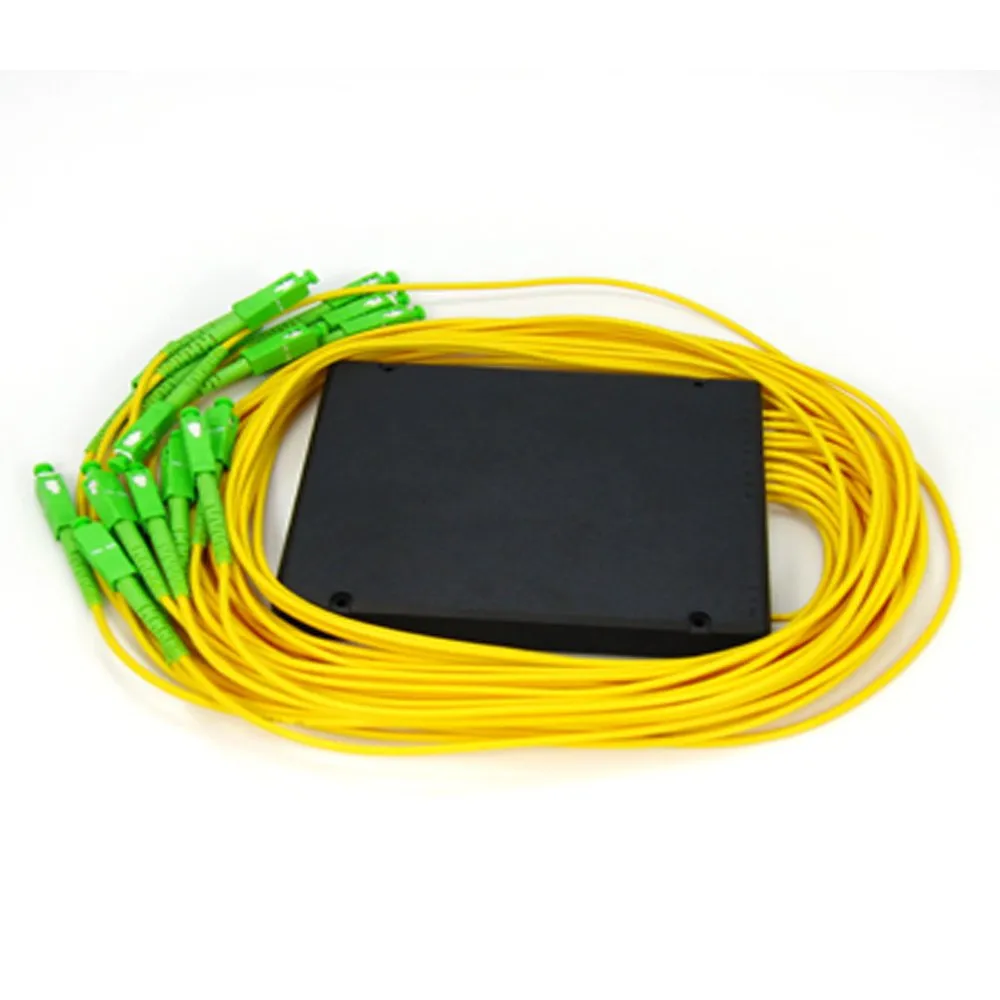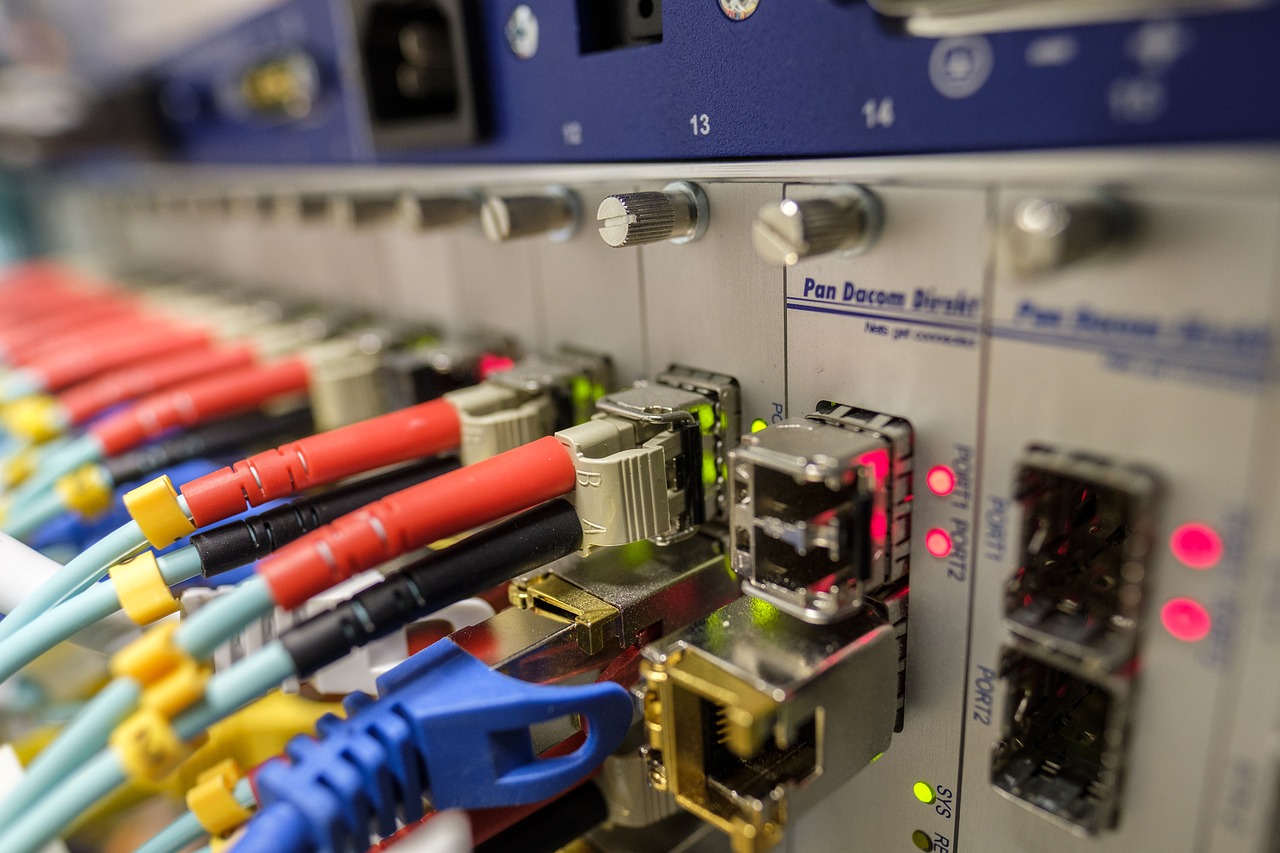The Complete Guide to 1x32 PLC Fiber Splitter with SC/APC Singlemode for ABSModule Splice Applications

Understanding the Basics of Fiber Splitters
In the realm of optical networks, Fiber Splitters play a pivotal role in enabling the efficient distribution of optical signals. But what exactly is a Fiber Splitter, and why are they essential components in these networks?
What is a Fiber Splitter?
A Fiber Splitter is a passive optical device that takes an input optical signal and splits it into multiple output signals. This process allows a single optical signal to be distributed across multiple paths without any active components or power supply. In essence, it divides the incoming signal into two or more output channels, making it an indispensable tool for network deployment and management.
The role of Fiber Splitters in Optical Networks
The primary function of Fiber Splitters in optical networks is to facilitate the sharing of optical signals among multiple end-users or network segments. By dividing the incoming signal, they enable cost-effective and efficient utilization of network resources, ultimately enhancing connectivity and accessibility.
Types of Fiber Splitters
There are several types of Fiber Splitters available in the market, each designed to meet specific network requirements. These include Fused Biconic Taper (FBT) splitters and Planar Lightwave Circuit (PLC) splitters. While FBT splitters are based on traditional technology, PLC splitters offer advanced performance and reliability, making them ideal for modern optical network deployments.
Why Choose a 1x32 PLC Fiber Splitter?
When considering Fiber Splitters, opting for a 1x32 PLC variant offers numerous advantages that align with the evolving needs of optical networks.
Benefits of High Split Ratios
The 1x32 configuration denotes that the incoming signal can be split into 32 output channels, allowing for extensive distribution capabilities within the network infrastructure. This high split ratio is particularly beneficial in scenarios where multiple endpoints need to receive the same signal simultaneously without compromising on quality or strength.
Specific Advantages of PLC Technology
Utilizing PLC technology in Fiber Splitters ensures superior performance, minimal insertion loss, and excellent uniformity across all output channels. Additionally, PLC splitters exhibit enhanced reliability and stability compared to their FBT counterparts, making them well-suited for demanding applications where consistent signal distribution is paramount.
By choosing a 1x32 PLC Fiber Splitter, network operators can harness these benefits to optimize their optical infrastructure effectively.
Exploring the SC/APC Connector and Its Importance
In the realm of optical fiber connectivity, the SC/APC Connector plays a crucial role in ensuring reliable and high-performance signal transmission. Understanding its design, advantages, and integration with Fiber Splitters is essential for optimizing network infrastructure.
The Basics of SC/APC Connectors
Understanding the SC/APC Design
The SC/APC Connector, which stands for Subscriber Connector/ Angled Physical Contact, features a 90-degree angled end face that minimizes back reflection and return loss. This design is particularly advantageous in minimizing signal degradation and ensuring consistent signal quality, especially in long-haul optical networks where signal integrity is paramount.
Why SC/APC Connectors are Preferred
The preference for SC/APC Connectors stems from their superior performance in minimizing signal loss and maintaining high-quality connections. Their ability to reduce back reflection significantly enhances the overall efficiency of optical networks, making them the connector of choice for critical applications where signal integrity is non-negotiable.
Integrating SC/APC with Fiber Splitters
Enhancing Signal Quality
When integrated with Fiber Splitters, the use of SC/APC Connectors contributes to enhancing signal quality throughout the network. The low back reflection characteristic of SC/APC connectors ensures that the split signals maintain their integrity as they propagate through different paths, resulting in minimal distortion and improved overall network performance.
Practical Considerations for Installation
During installation, careful attention must be given to aligning and securing SC/APC Connectors to ensure optimal performance. Proper cleaning and inspection procedures should be followed to guarantee that each connection maintains its low back reflection properties, thereby safeguarding the network against potential signal degradation or disruptions.
Utilizing high-quality SC/APC Connectors alongside Fiber Splitters is instrumental in achieving robust and reliable optical network deployments.
The Role of ABS Modules in Fiber Splicing
In the realm of fiber splicing, ABS Modules play a crucial role in ensuring efficient and reliable connections. Let's delve into the key features of ABS Modules and understand why they are indispensable in the process of splicing optical fibers.
Introduction to ABS Modules
Key Features of ABS Modules
ABS Modules are compact, protective enclosures designed to house and protect fiber optic splices. They typically feature a sturdy, impact-resistant housing that safeguards delicate optical fibers from environmental factors and mechanical stress. Additionally, these modules provide organized routing and storage for pigtailed fibers, ensuring proper strain relief and protection against bending or tension.
Why Use ABS Modules in Splicing?
The utilization of ABS Modules in fiber splicing is essential for maintaining the integrity and longevity of optical connections. By providing a secure environment for spliced fibers, these modules mitigate the risk of signal loss due to external disturbances or handling errors. Moreover, they facilitate easy access for maintenance and troubleshooting while safeguarding the splices from dust, moisture, and other potential contaminants.
Combining ABS Modules with 1x32 PLC Fiber Splitters
Benefits for Network Design
Integrating ABS Modules with 1x32 PLC Fiber Splitters offers several advantages that contribute to robust network design and performance. The combination ensures that spliced fibers are adequately protected within the module, minimizing the risk of signal degradation or interruptions. Furthermore, it enables efficient organization and management of splice points, simplifying future maintenance activities and enhancing overall network reliability.
Tips for Effective Splice Management
When incorporating ABS Modules with 1x32 PLC Fiber Splitters, it is essential to adhere to best practices for effective splice management. This includes meticulously labeling each splice point within the module to facilitate easy identification during maintenance tasks. Additionally, proper documentation detailing the location and characteristics of each splice can streamline troubleshooting efforts and minimize downtime in case of network issues.
Practical Applications and Tips for Using 1x32 PLC Fiber Splitters
As the demand for high-speed, reliable data transmission continues to grow, the practical applications of 1x32 PLC Fiber Splitters have become increasingly diverse. Understanding where these splitters are best utilized and implementing them effectively is crucial for optimizing network performance.
Where to Use 1x32 PLC Fiber Splitters
Applications in PON Networks
Passive Optical Networks (PON) rely on the efficient distribution of optical signals to deliver high-speed internet, voice, and video services to end-users. 1x32 PLC Fiber Splitters play a pivotal role in enabling this distribution by dividing the incoming signal from the service provider's central office into multiple output channels that serve individual subscribers. This deployment ensures cost-effective connectivity while maintaining signal integrity throughout the network.
Other Relevant Use Cases
Beyond PON networks, 1x32 PLC Fiber Splitters find extensive application in various scenarios requiring efficient signal distribution. These include fiber-to-the-home (FTTH) deployments, where they enable seamless connectivity for residential users, as well as in enterprise environments where large-scale data transmission and communication infrastructure necessitate reliable signal splitting capabilities.
Tips for Successful Implementation
Best Practices for Installation
When deploying 1x32 PLC Fiber Splitters, adherence to best practices during installation is paramount to ensure optimal performance and longevity of the optical network.
Careful Handling: Handle the splitters with care during installation to prevent any damage to the delicate optical components.
Proper Splice Protection: Ensure that all splices within the splitter are adequately protected against environmental factors and mechanical stress using ABS Modules or protective enclosures.
Regular Inspection: Implement a regular inspection schedule to monitor the performance of the splitters and address any issues promptly.
Troubleshooting Common Issues
Despite meticulous installation and maintenance, occasional issues may arise when using 1x32 PLC Fiber Splitters. Being prepared to troubleshoot common problems is essential for minimizing downtime and ensuring uninterrupted network operations.
Signal Loss Analysis: In case of signal loss, conduct a thorough analysis of each connection point within the splitter to identify potential causes such as contamination or misalignment.
Environmental Factors: Monitor environmental conditions such as temperature and humidity that could impact splitter performance, taking preventive measures if necessary.
Documentation Maintenance: Keep detailed records of installation dates, maintenance activities, and any observed issues to facilitate troubleshooting efforts in the future.
By leveraging these tips for successful implementation, network operators can maximize the efficiency and reliability of their optical infrastructure when integrating 1x32 PLC Fiber Splitters.


